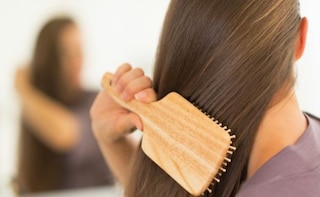After 20 years of trying every drug, supplement, diet and procedure for hair loss - including driving four hours twice a week for laser therapy - Lina Telford, a graphic artist, gave up on her "comb over" (her description) and shaved her head. From then on, she alternated between a $1,500 wig and a $4,000 wig.
Advertisement
Advertisement
Advertisement
Advertisement
For the latest food news, health tips and recipes, like us on Facebook or follow us on Twitter and YouTube.
Advertisement
Tags:
